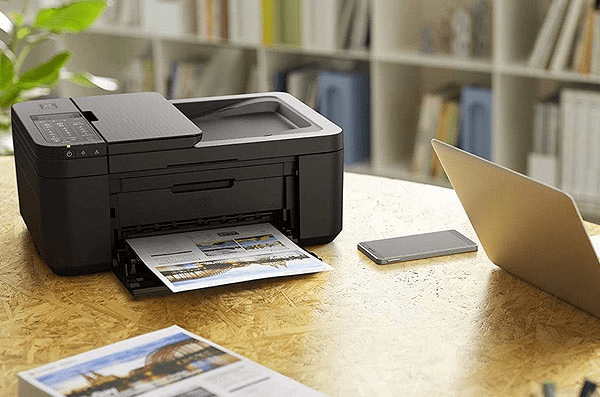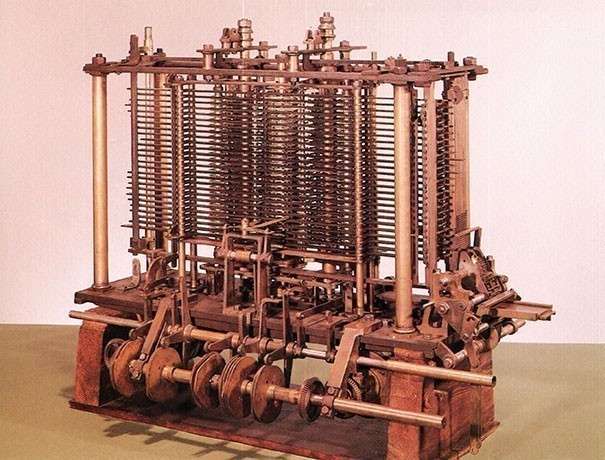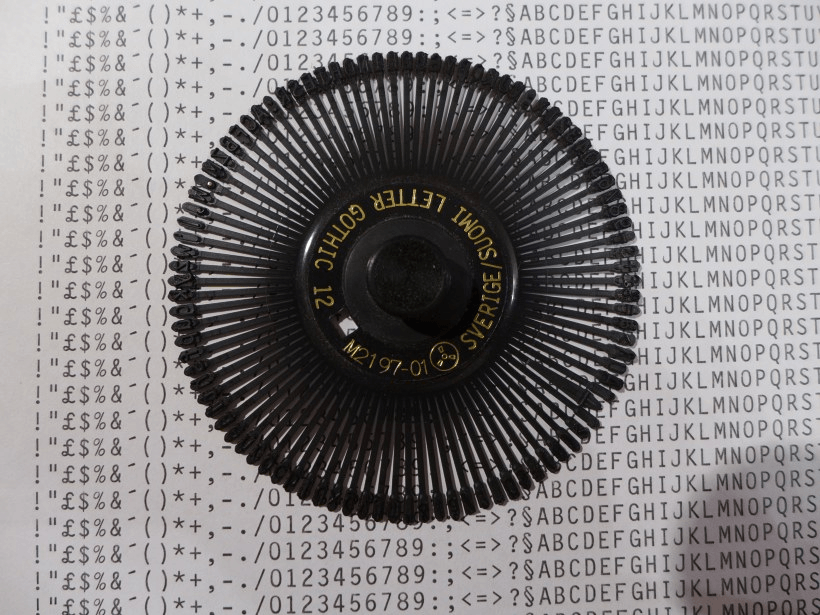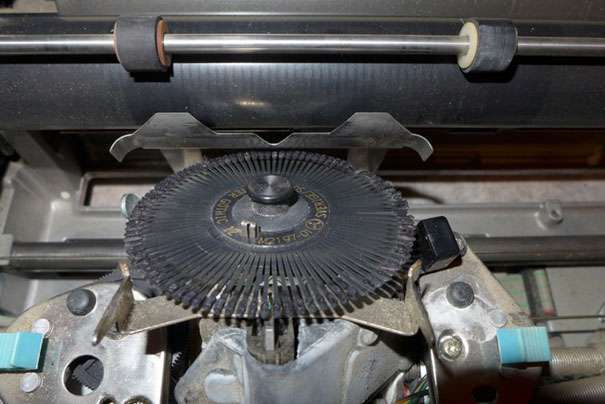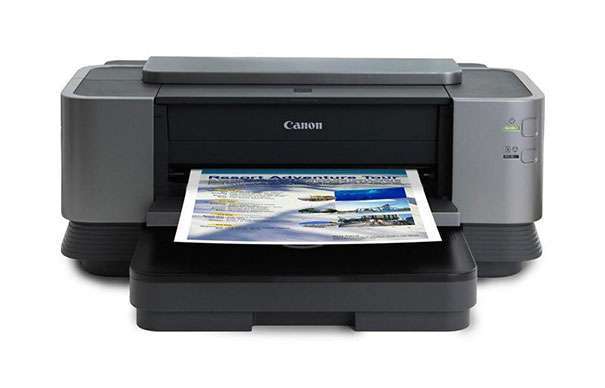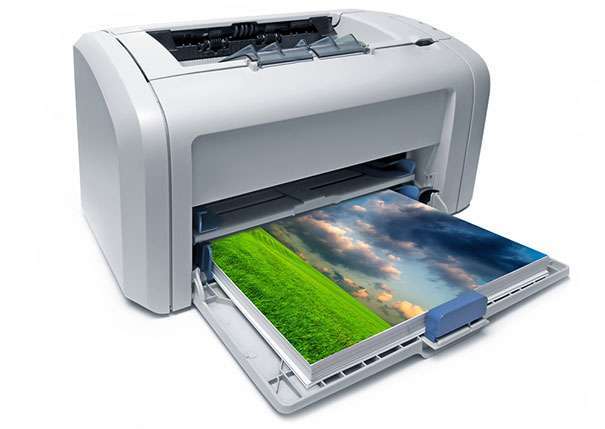Who invented the printer and when? History of inkjet and laser printers
It is difficult to imagine all modern business activity of a person without the chirping of printers. Meanwhile, the history of the appearance of the printer is not so short and very interesting.
Is Babbage’s Miracle Machine the First Printer?
Most computer experts agree that the history of the development of the printer began almost two hundred years ago, when in 1822 the Englishman Babbage began the development of a "large difference engine" that was supposed to make calculations and immediately print their results in the form of tables. By 1834, the machine had not been created, although it took 23 thousand pounds to develop it, however, work on it was interrupted, and in 1842 Babbage’s project was no longer funded by the British government. The big difference engine died before it was born.
It is curious that after 150 years, the employees of the London Science Museum, using the surviving drawings, were able to recreate this unique device, which is actually a mechanical computer. It included more than 8 thousand parts, and this "calculator" weighed 5 tons. But most importantly, the machine could actually solve the simplest equations and print the results on paper! Therefore, Babbage, with a certain stretch, can be called the person who invented the printer.
Petal printers – the forefathers of automatic printing
When the first electronic computers appeared in the middle of the last century, the need to save the results of their work immediately arose. At that time, typewriters dominated, so computer centers initially hired a staff of typists who pounded the keys tirelessly all day. Obviously, this could not continue for a long time, and the inventors thought about combining computers with printing devices. As a result, the Rammington-Rand Company released the Uniprinter in 1953. The principle of operation and appearance of the new device resembled a typewriter, but it was many times larger than it.
The basis of the first printing devices was the petal printing mechanism, since it resembled a chamomile with petals, at the end of each of which there was one of the characters. The percussion mechanism hit the petal, and it hit the paper through the tape soaked with paint, leaving an imprint of the symbol on it. With the help of replacements for different “daisies", it was possible to change the size of characters or fonts. Such printers could print 78 thousand characters per minute, which is much faster than even fifty professional typists (a person could print only 200 characters per minute).
- Already in the next two years, IBM printers brought the print speed to 100 thousand characters / min, but were not very reliable and were not widely used.
- But IBM did not give up, and in 1959 released the 1403 printer, which prints 184.8 thousand characters per minute. This "beast" spit out the paper at such a speed that the employees did not have time to collect it from the floor. At the same time, the print quality remained quite high.
- Similar devices were produced in the USSR, but had a different name – ATsPU (alphanumeric printing device).
Needle printing (matrix printers)
The dot-matrix printers that followed had a slightly similar principle of operation to the "chamomile". But there was a significant difference: the print on paper was still obtained by hitting the ink ribbon, but not a petal with a specific letter, but a single printhead that formed any character by manipulating a set of tiny needles.
- The first dot matrix printer in 1964 was created by the Japanese company Seiko Epson, its task was to print the exact time.
- Centronics Data Computer Corporation developed its first dot-matrix printer in 1970 and over the next ten years became the largest manufacturer of them. These printers did not print as fast, but were quite expensive.
- The first home-use printer, Apple’s Image Writer, was sold with a computer and cost "some" $675 in 1983.
Invention of inkjet printers
Dot matrix printers served in offices for quite a long time, only they were incredibly noisy and could not provide acceptable print quality. Inventors continued to dream of a quiet and inexpensive device that can produce high-quality prints, which began the history of inkjet printers.
- Back in 1948, a prototype device appeared in the Siemens laboratory that could print with controlled ink jets. But before the advent of normally working devices had to wait another quarter of a century.
- In the period from the early 70s to the mid-80s, engineers from several companies at once (Brother, Epson, Hewlett-Packard and Canon) developed the basic techniques of inkjet printing, the difference of which consisted in the method of printing ink on paper. All of these devices had a container of paint with a small nozzle at the bottom where a drop of paint formed. Then, using strong heat or a piezoelectric effect, the drop was shot towards the paper.
- In 1976, IBM managed to release the first inkjet printer (model 6640).
- The following year, Siemens responded with the first inkjet printer for the personal computer.
- Hewlett-Packard in the early 90s received a patent for inkjet color printing technology, where a color image was achieved by printing with three colors (yellow, red and blue). This made it possible to obtain a lot of shades of different colors. Since then, printers have been able to print color images.
Video about the history of the appearance of the printer
Laser printers
If we talk about laser printers, the history of their creation will be longer than that of inkjet and even matrix systems. Indeed, back in 1938, the American inventor and physicist C. Carlson invented electrography – a printing method that is taken as the basis in modern copiers and laser printers. Therefore, it is believed that C. Carlson is the person who invented the laser printer.
In electrography, a photodrum is used – an aluminum tube coated with a photosensitive layer. It has a negative charge. The laser beam, running over the surface of the drum, in places where printing will be applied, removes part of the charge. As the drum rotates, toner (dry ink dust) is covered in areas where the charge has been reduced by the laser. With further rotation, the drum contacts the paper, transferring all the toner adhering to it, after which the paper sheet passes through an oven, where the toner is firmly sintered with the cellulose. In color printers, black, cyan, red and yellow powders are sequentially applied to the drum.
About which company invented the first laser printer, IBM and Xerox are still arguing, referring the time of the invention to 1976 or 1977.
Although the first models were not of high print quality and cost over 10 thousand dollars. But by the 1990s, the quality improved, and prices fell below a thousand dollars. And in 1993, QMS released the first color printer, which cost 12.5 thousand "green". Apple reduced the cost of its model to 7,000 two years later.
20 years have passed since then, and now a modern color laser printer designed for home use costs no more than 5 thousand rubles. Of course, you can find models for 30 thousand, but these are designed for special conditions (high speed and performance, large formats). Due to the high competition in the technology market, there are many devices offered, so it is important to determine the important parameters when choosing a printer and compare laser printers to make the right decision.
In recent years, in addition to laser printers, LED printers have also appeared that use the same electrographic printing system, but instead of a laser scan device, a line of LEDs stretching along the drum is used. LED printers turned out to be easier to manufacture, they are smaller in size, which makes them cheaper than laser ones, but they print at half the speed.
Recent achievements – 3d printer
A real revolution in printing has been the creation of three-dimensional printers that can no longer just print, but reproduce three-dimensional objects. Such devices began to be developed in the 80s of the last century. Then they were taught, like a milling machine, to grind the workpiece layer by layer to give it the proper shape. Later, the principle was reversed – a polymer film was applied to a flat surface, which gradually formed a three-dimensional figure on it. Modern three-dimensional printers can even make a car out of plastic, and even the wheels will spin.
